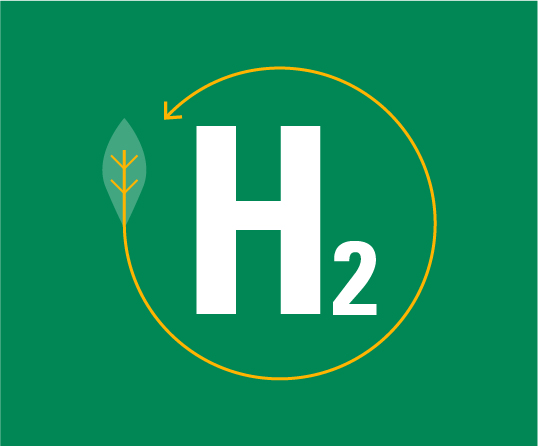November 2021
As we progress towards our zero carbon constuction site, we will upload regular updates here, outlining some of the key decisions we've had to make, our successes, the barriers we've faced and the solutions we've developed.
Key Learnings
|
Key learning |
Our action |
|
A zero carbon construction site needed to be part of the conversation as early as possible with the customer, designer, and supply chain. |
Learning filtered back to the rest of the business. |
|
More time and resource are needed up front to examine all the options and assess their carbon impact. |
We have put in place a Delivery Group to oversee the decision-making process and corral expertise from across the UK businesses. The procurement resource has also been increased specifically for this scheme. A new Net Zero Champion and Carbon Manager have been put in place. |
|
Solar-hybrid is definitely something that we can be confident about using on site. However, it takes more space than standard generators, which needs to be planned for from the beginning and which also limits their use to smaller sites. |
Learning filtered back to the rest of the business. |
|
Until there is more available as standard, we need to plan further ahead to secure the most carbon efficient heavy plant than we would do with standard machinery. |
Learning filtered back to the rest of the business. Discussions ongoing about the use of retrofitted heavy plant and what our hierarchy of carbon efficient plant should look like, taking circular economy considerations into account. |
|
Key learning |
Our action |
|
We’ll be assessing the effectiveness of the CCC model, the impact on carbon emissions and the benefits delivered for our customer and our supply chain partner, but our hypothesis is that this could offer significant benefits. |
We will document the benefits the distribution centre model brings and will share the findings internally. |
|
To be able to gain the full benefit of the CCC model, we need to be able to include the details in subcontract enquiries issued to the supply chain currently, to ensure they engage with our successful partner. |
Decisions need to be made more quickly to reap the full benefit. |
|
Using a PPE recycling scheme has the potential to save tonnes of waste from going to landfill if extrapolated over the whole business. |
Once the trial has concluded, the results will be shared with the rest of the business to ensure as many schemes as possible benefit. |
|
There are more sustainable PPE options available. |
We’ll be assessing the new PPE and taking feedback from those using and wearing it. Learnings will then be shared with our supplier and the Procurement Team. They will then hopefully be used as Standard/Core Products, if there is no compromise on current standards of PPE. |
|
We need to work collaboratively with our customers and designers to ensure that as we transition to digital tools, that information generated from day one of the design process is compatible with the desired modelling and management tools for construction and operation. |
This is a journey we have already started – trying to define minimum digital standards from the onset of a project to ensure that all parties gain the benefit of a truly digital collaborative experience. We will continue to work with customers and to disseminate learnings across our business. |
|
Defining what the net zero aspirations for a project are, and what will be included in the carbon footprint reporting, right at the concept stage of a project is so important. |
We will continue to work collaboratively with our customers and continue to push for early engagement at the concept stage of new projects. |
|
Key learning |
Our action |
|
On cost for zero carbon construction sites we are in a period of transition as we move away from red diesel. As the technology solutions become more readily available we will see a series of changes i.e. the move to battery powered tools. To ensure these transitions can be delivered at zero cost, we need to look at the whole cost not just the red diesel cost but its transportation / refuelling / containment etc. If we have a mains connection the charging infrastructure can be installed and the costs shared across the supply chain for charging. |
Learning shared with the Sustainability and Procurement teams and filtered back to the rest of the business.
|
|
Topsoil is a precious resource and every effort should be made to reuse 100% of it. We have c.50 tonnes of soil allocated to local allotments and schools charitable initiatives as SEPA have agreed we can use the Greenfield soils protocol, meaning we can work with the material as a clean material and not a waste. We need to continue to collaborate with other UK regulators so that this valuable resource is classified as a material that can be reused and its inherent value is not lost by being classified as a waste. |
We will continue to Think Global, Act Local and try and maximise the local reuse of any surplus materials from the project. |
|
In order to secure sufficient people with the skillsets we need to undertake zero carbon construction, we need to work more closely with academia, CITB, the Supply Chain Sustainability School, Construction Scotland and others, to work out how we best future proof the future construction industry and help upskill the whole sector. |
Learning filtered back to the rest of the business, specifically Group HR. |
|
Where one part of the business and our supply chain partners work on an innovative, sustainable solution, we need to ensure that we are capturing and sharing the learnings and skills as widely as possible to ensure that we are able to deliver these solutions efficiently for all our customers and that handover to the customer is as seamless as possible. |
Learning filtered back to the rest of the business, specifically the Sustainability team. |
|
Key learning |
Our action |
|
Standard Operating Procedures will need to be updated to account for the different operational rules for sustainable plant. |
Plant checklists and guidance documents are having alternative fuels sections added and new inspection processes are being developed. |
|
New equipment will have new safety requirements - we cannot assume that the safe site of the future will require the same approach as safety does now. |
These safety requirements are being captured. Internal plant specifications are being amended to cover safety requirements. |
|
The journey to Net-Zero requires us to embrace new technology (such as EV plant) - but it shouldn’t mean chasing inefficient solutions when other sustainable will become available in the longer term. |
We will take each site on a case-by-case basis and always seek the most efficient plant, using our Fuel Hierarchy as our guide.
We will also continue to invest in our work on hydrogen as our view is that this is likely to be where the future lies for heavy plant. |
|
The broader change from to EV and beyond will require us to reconfigure our supply chains and planning assumptions to cope with different capacities and efficiencies of machinery. |
This is being passed on to all relevant colleagues to ensure that the learnings are understood and help to drive progress. |
|
Learning |
Action |
|
Integrating hydrogen technology into existing sites can pose challenges, especially when space is limited as the supporting infrastructure required is larger. As hydrogen is less energy dense than diesel, a typical hydrogen storage unit for construction plant will take up a footprint of approximately 12m x 5m, whereas the same diesel unit would be less than 2m x 2m.
|
Learnings disseminated across our business. Better understanding hydrogen demand will allow earlier pre-planning for hydrogen infrastructure within construction sites. |
|
The transition to hydrogen is a significant undertaking that requires huge financial support. The availability of funding, such as that provided by the Scottish Government, plays a crucial role in bridging the affordability gap and ensuring a smoother and faster transition to hydrogen as a sustainable energy source. |
Write to the Governments to outline that continued funding of hydrogen is needed to allow the transition to occur. Consideration of initiatives such as tax incentives on hydrogen should be considered by the Governments to make the transition quicker for the construction and other heavy industries. |
|
The success of hydrogen adoption relies on collaboration among industry partners, including supply chain partners and fuel companies. From hydrogen producers to plant manufacturers offering hydrogen-powered equipment, everyone in the hydrogen network must contribute to its success. |
Balfour Beatty remains fully committed to sharing our successes and failures to help retain industrial memory and learning to allow the transition to occur quicker.
We are maintaining a register of lessons learned which we will share with interested parties. We have already taken some of the learnings from our HS2 retrofit project and applied them to this project and will continue to look for partners who can help us move forward in this rapidly evolving field.
We support initiatives such as the Scottish Hydrogen Construction Hub, which will help further this requirement. |
|
Hydrogen supply remains variable. |
We are in a ‘chicken and egg’ supply at the moment with regards to demand and supply: supply infrastructure is growing but still limited, but suppliers need to better know what future demand is going to be to plan their investment. We will continue our open dialogue with suppliers and the rest of the industry to give clarity over our commitment and the scale of our ambition. |





